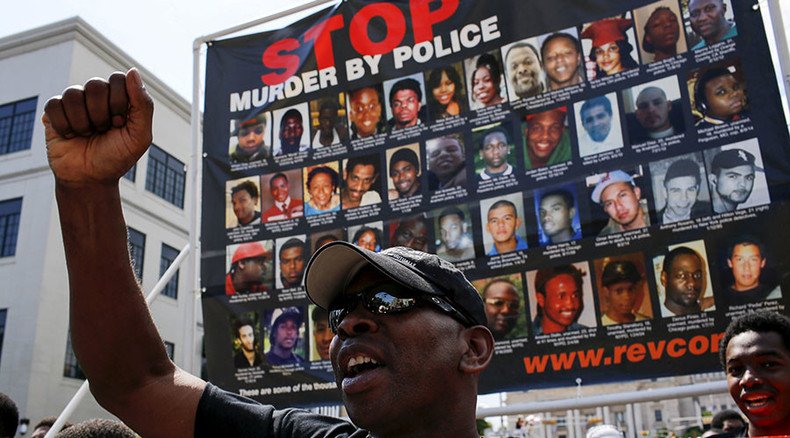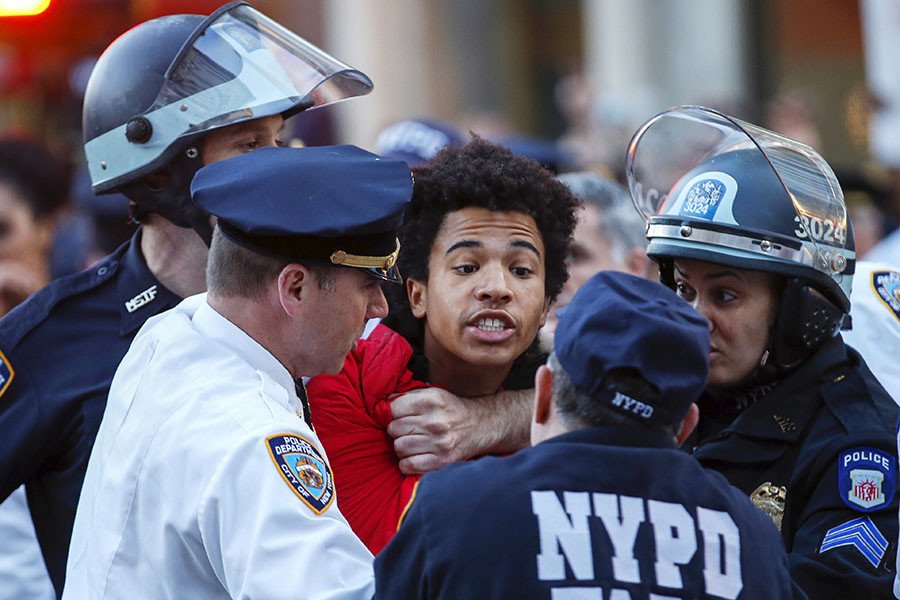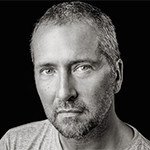The US police: Locked and loaded

The police claim to be there to protect and to serve. The question increasingly being asked: to protect and to serve whom – and from what?
There is no question that police violence in the US is on the increase – and disproportionately so compared with other countries.
As the UK’s The Guardian noted: “In the first 24 days of 2015, police in the US fatally shot more people than police did in England and Wales, combined, over the past 24 years.”
Figures vary. Washington Post put the number of police killings since the beginning of the year at 759, while The Guardian said it was 891 as of October 9.
Yet only 54 officers have been charged over the past decade for fatally shooting someone while on duty, according to an analysis by The Washington Post and researchers at Bowling Green State University.
In an overwhelming majority of the cases where an officer was charged, the person killed was unarmed. But it usually took more than this simple fact to force the case to court.
When prosecutors pressed charges, The Post’s analysis found, there were typically other factors which made the case exceptional, including: a victim shot in the back, a video recording of the incident, incriminating testimony from other officers or allegations of a cover-up.
Forty-three cases involved at least one of these four factors. Nineteen cases involved at least two.
The main arbiter seems to be video evidence. Where the killing is uploaded to YouTube – especially if it’s edited in such a way as to make the victim seem disadvantaged, pathetic or both – there is a much better chance of the killers having a day in court.
Such video is typically provided by a chance passer-by, the police’s own dashcam, or CCTV.
The Washington Post piece states: “Prosecutors interviewed for this report say it takes compelling proof that at the time of the shooting the victim posed no threat either to the officer or to bystanders.”
This is a telling sentence. In order for a killing by police to stand any chance of being heard one must have “compelling proof” that the victim posed no threat. This means in cases of police killing citizens the burden of proof is on definitively proving a negative – something generally known to be impossible – in a scenario in which the principle witness is dead. It is no wonder so few police are prosecuted.
The unspoken message is that police may consider themselves judge, jury and executioner in all cases except those where exceptional circumstances prevail.
Concurrent with this troubling tendency is evidence – both anecdotal and supported across media – that US police forces actively hire officers with lower IQs.
The New York Times reported back in 1999 that a federal judge dismissed a lawsuit by a man who was barred from the New London police force because he scored too highly on an intelligence test.
Judge Peter C. Dorsey of the United States District Court in New Haven agreed that the plaintiff, Robert Jordan, was denied an opportunity to interview for a police job because of his high test scores. But he said that that did not mean Mr. Jordan was a victim of discrimination since anyone who scored too high was rejected.
The baseline argument seems to be that people with higher functioning intellectual capabilities are not likely to find the tedium of police work stimulating and will leave after an expensive training process, thus wasting public money.

Some might argue that, by the same logic, individuals who are intellectually very average have no business making life-and-death decisions either.
The US police is becoming ever more militaristic in its presentation and attitude. Even small town forces buy up – at massively reduced prices – ex-military vehicles and equipment.
The police force is seen as a natural destination by many transitioning out of the military. Star Cazador, for example, from San Jose followed her fellow Marines after discharge and applied to the Santa Clara County Sheriff’s Office, as reported by Military.com.
“There is a huge comfort level,” said Cazador, who served in the Marines from 2005 to 2009 and is now a Santa Clara County sheriff’s deputy. “In the Academy my best friends were other prior military. We knew exactly how each other’s brains worked. We could just look at each other. We didn’t even have to communicate.”
Military.com also reports that another recent veteran, Yeffiry Disla, 38, who is preparing for civilian life after spending four years in the Marines and 15 years in the Army including three deployments of 10 months or longer to Iraq and Afghanistan said, “[Working as] a cop would be my fall-back if I can’t do something else simply because I was an infantryman and those are my skills. Anything you want to see in a soldier, you want to see in a policeman.”
Actually, no, not everything I see in a soldier is what I want to see in a policeman. A soldier’s job is to take orders and, without questioning those orders, kill whomever they are told to kill. It is extremely worrying if these are the people who are swelling the ranks of any police force.
Fear of police is widespread. There are literally thousands of hours of police brutality on YouTube: seemingly interminably stupid officers taking offence at the slightest whiff of anything less than abject submission on the part of a member of the public and then beating, Tazing and not infrequently murdering the person in question. Often the officers are unnaturally bulky physically, and the use of steroids is said to be commonplace and condoned.
Some 45,000 SWAT team raids take place in the US every year. They raid at night for maximum effect, break down doors, use flash-bang grenades, shoot dogs, trash homes, and assault and traumatize the people who are paying their wages.
Lev Raphael reports in the Huffington Post that US police increasingly work within a culture in which the public is regarded as the enemy – and the influx of ex-military personnel will only make such tendencies stronger.
I don’t doubt that the police are there to protect and to serve. But the question I am increasingly asking is: to protect and to serve whom – and from what?
Police force strategies do not evolve organically. They come from clear directives. They have planned goals and desired outcomes.
Somebody, somewhere decided that the police should be militarized, dumbed down, set in opposition to the general public, have no compunction about killing, and feel protected both by their own colleagues as well as by the broader system in such cases.
And given the coherence and the breadth of the roll-out of this troubling tendency, the decision must have been made at the highest levels of power.
The question is: why?
Here we enter into the realm of speculation. But what is beyond doubt is that should those who control the government decide to move to an open police state, all systems and procedures necessary for a seamless switchover to that position are fully in place.
During the Great Southwest Railroad Strike of 1886 trade unionists claimed that Jay Gould – a leading American railroad developer and speculator long vilified as an archetypal robber baron –said, “I can hire one-half of the working class to kill the other half.”
If the US economy finally goes into meltdown, we may well find out if Gould was right.
The statements, views and opinions expressed in this column are solely those of the author and do not necessarily represent those of RT.













